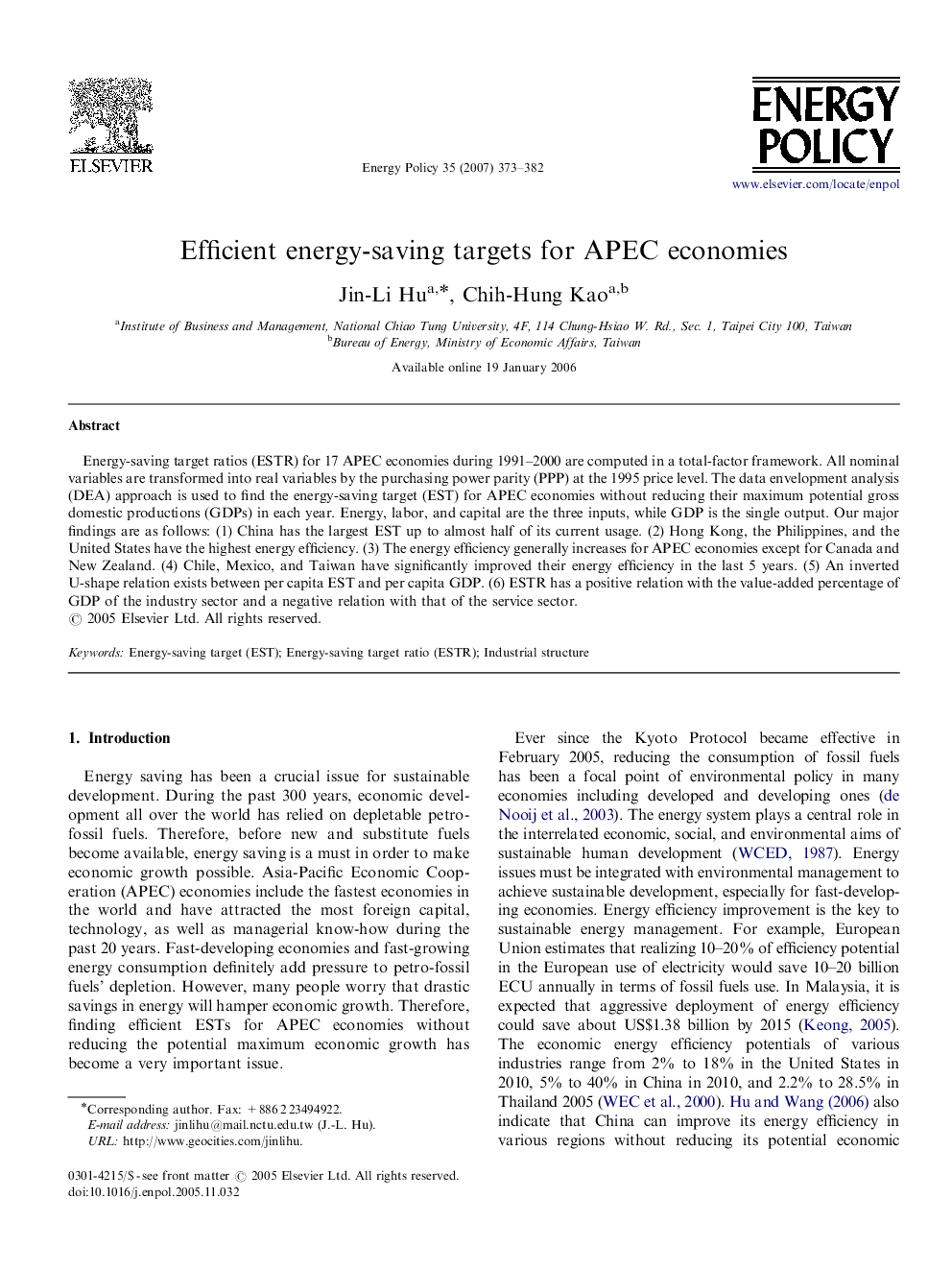| Article ID | Journal | Published Year | Pages | File Type |
|---|---|---|---|---|
| 994584 | Energy Policy | 2007 | 10 Pages |
Energy-saving target ratios (ESTR) for 17 APEC economies during 1991–2000 are computed in a total-factor framework. All nominal variables are transformed into real variables by the purchasing power parity (PPP) at the 1995 price level. The data envelopment analysis (DEA) approach is used to find the energy-saving target (EST) for APEC economies without reducing their maximum potential gross domestic productions (GDPs) in each year. Energy, labor, and capital are the three inputs, while GDP is the single output. Our major findings are as follows: (1) China has the largest EST up to almost half of its current usage. (2) Hong Kong, the Philippines, and the United States have the highest energy efficiency. (3) The energy efficiency generally increases for APEC economies except for Canada and New Zealand. (4) Chile, Mexico, and Taiwan have significantly improved their energy efficiency in the last 5 years. (5) An inverted U-shape relation exists between per capita EST and per capita GDP. (6) ESTR has a positive relation with the value-added percentage of GDP of the industry sector and a negative relation with that of the service sector.
